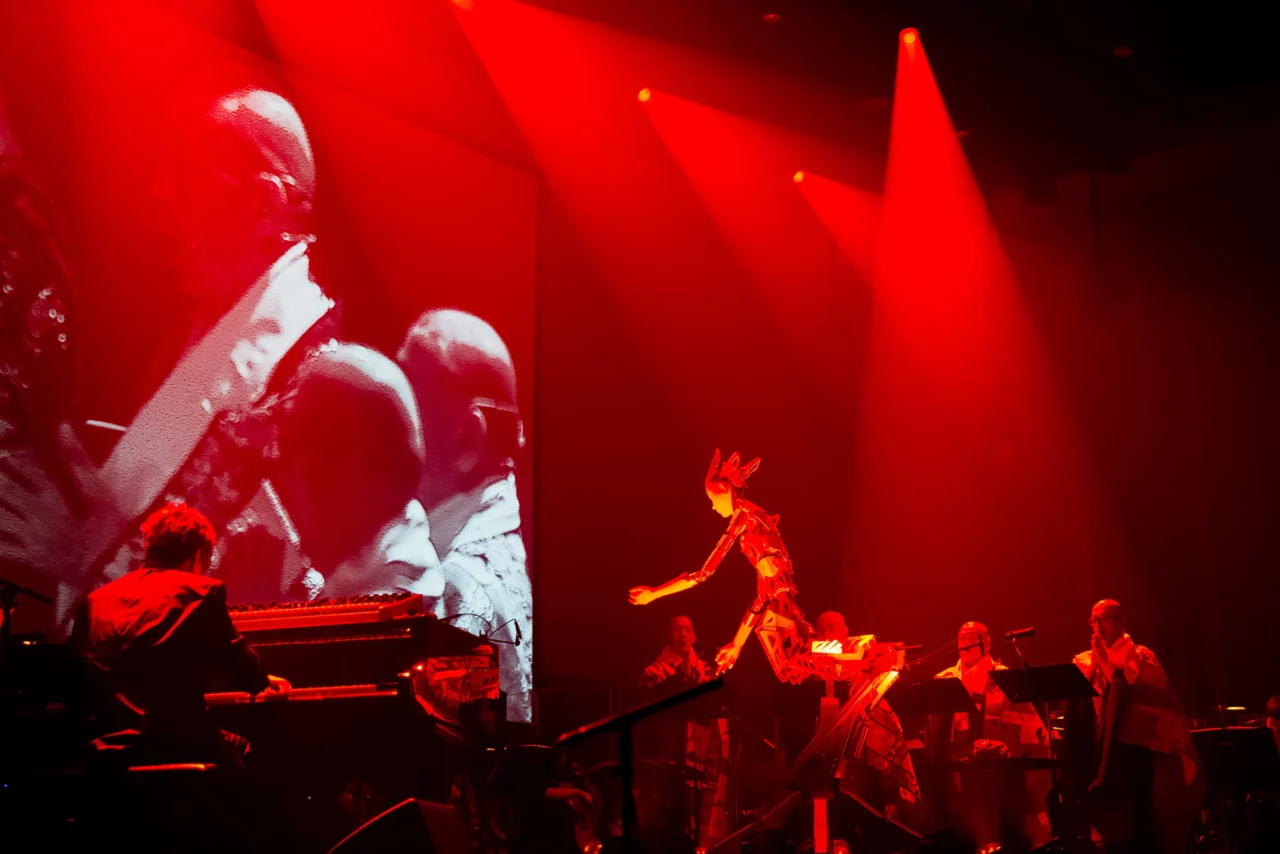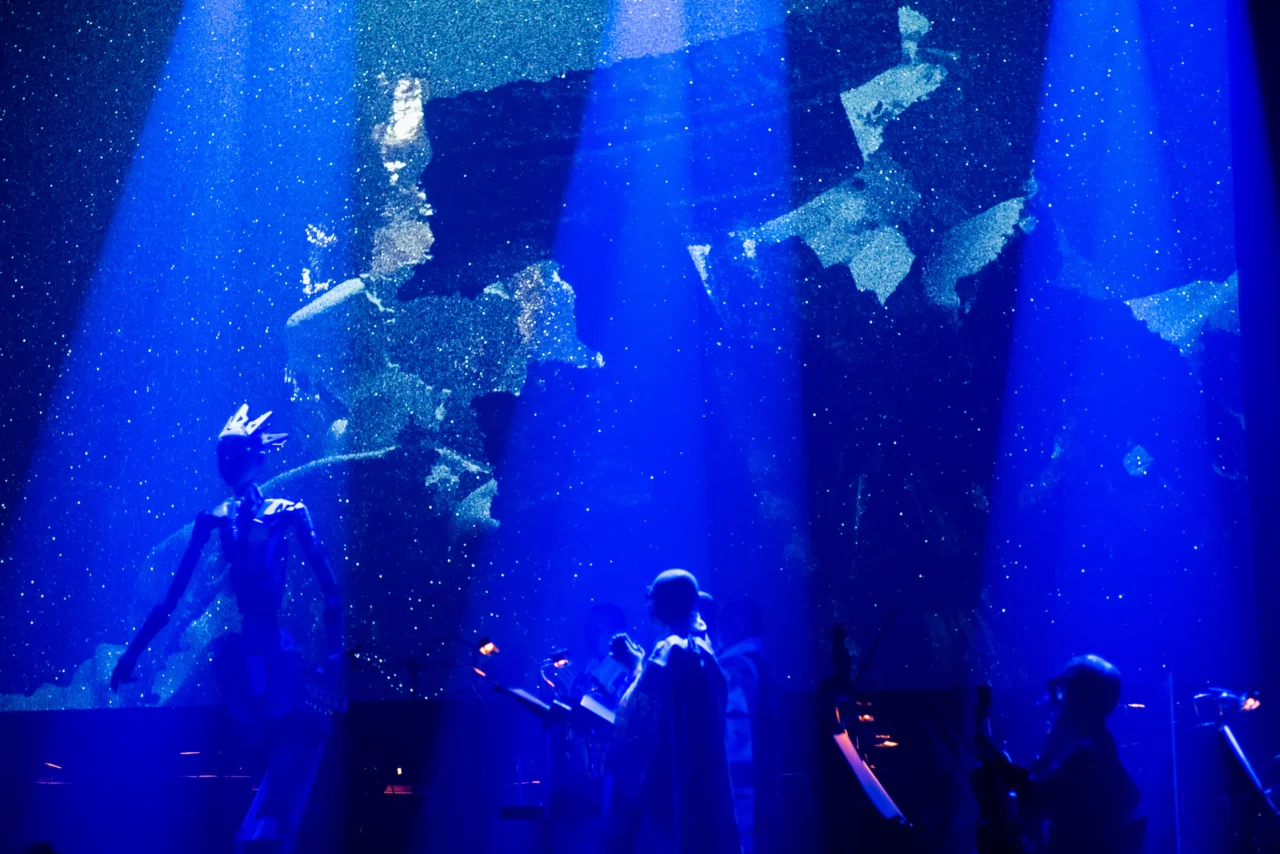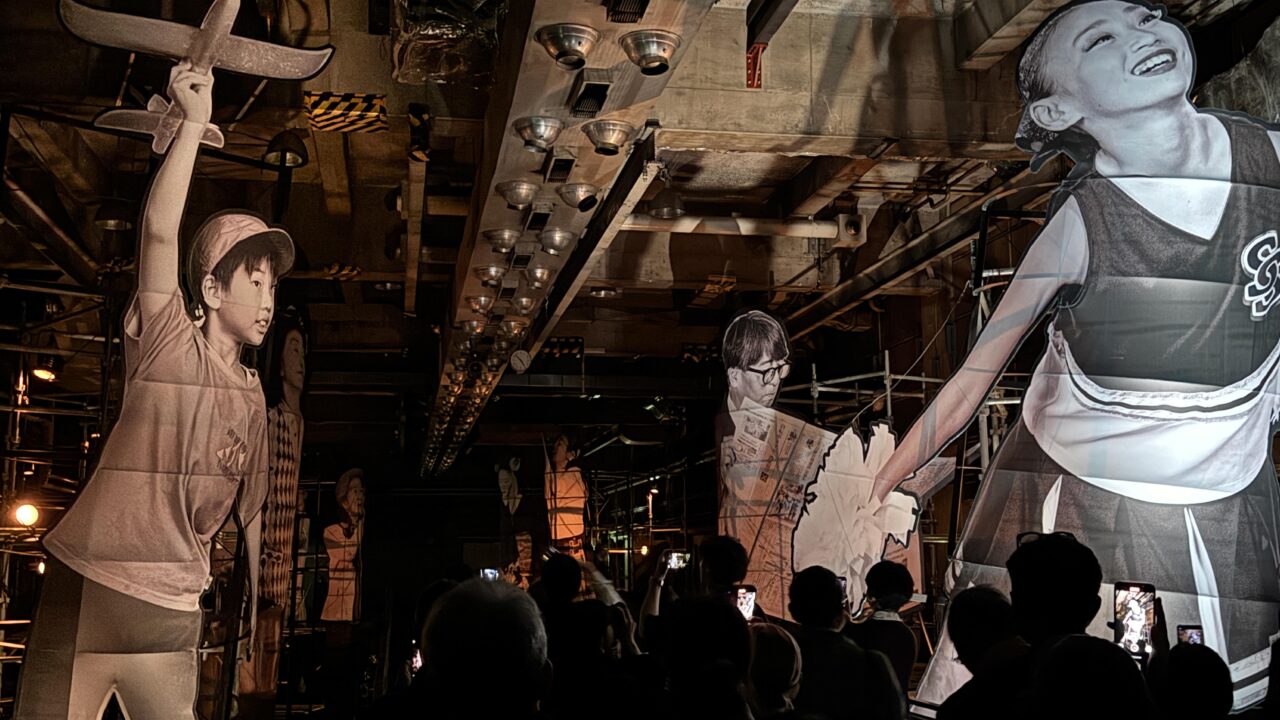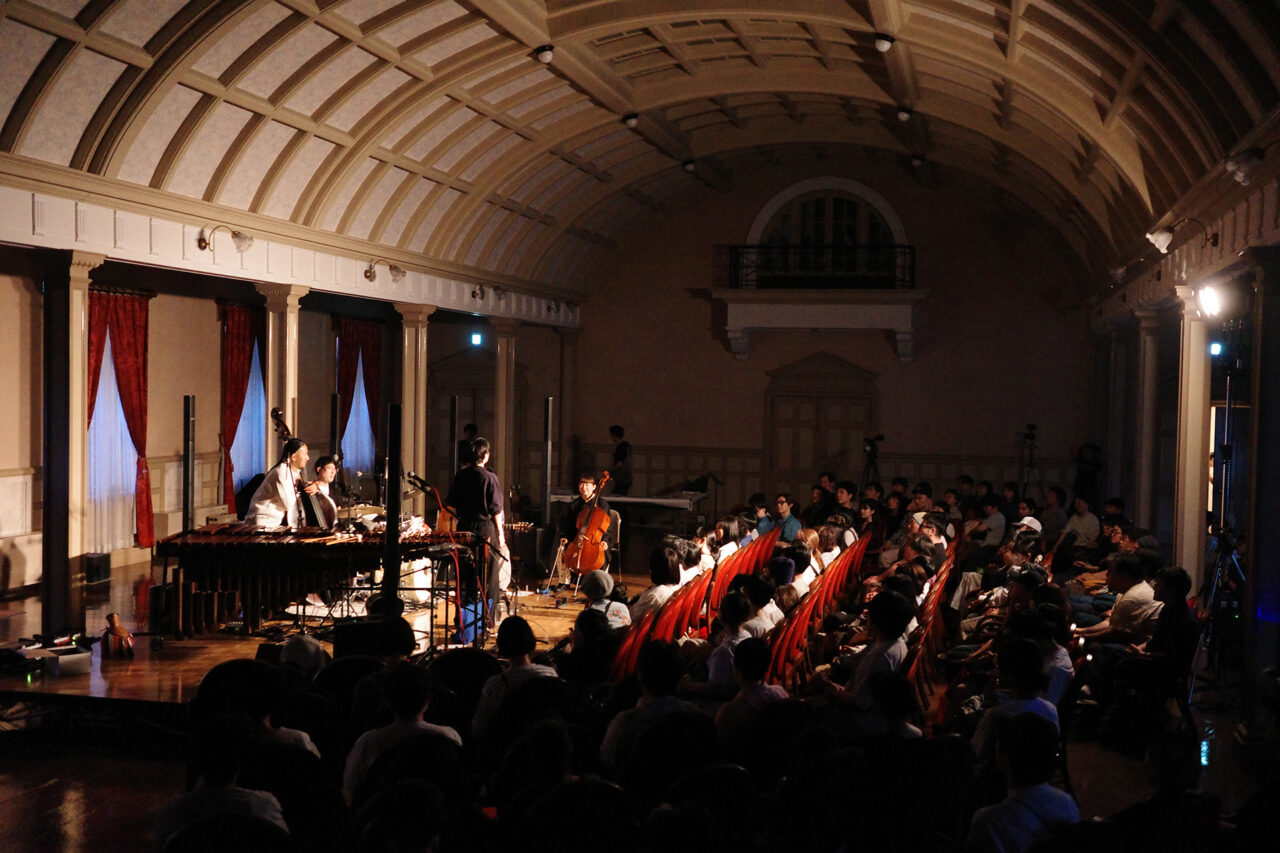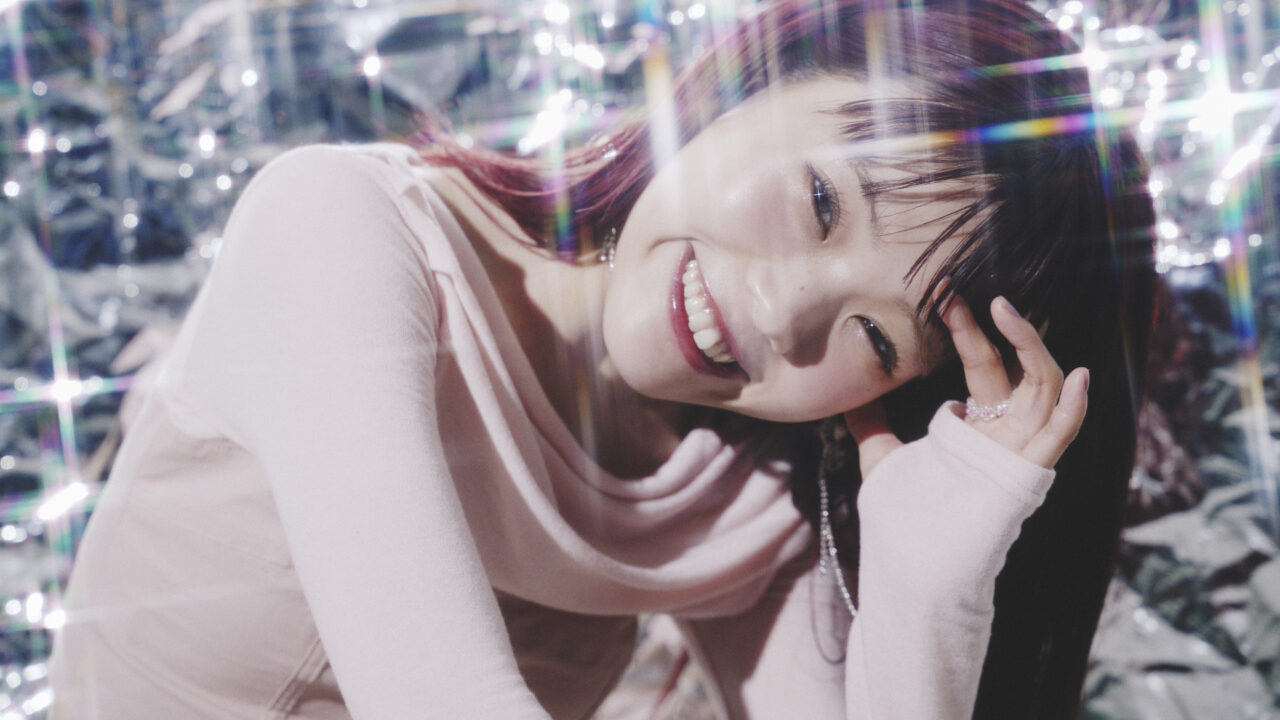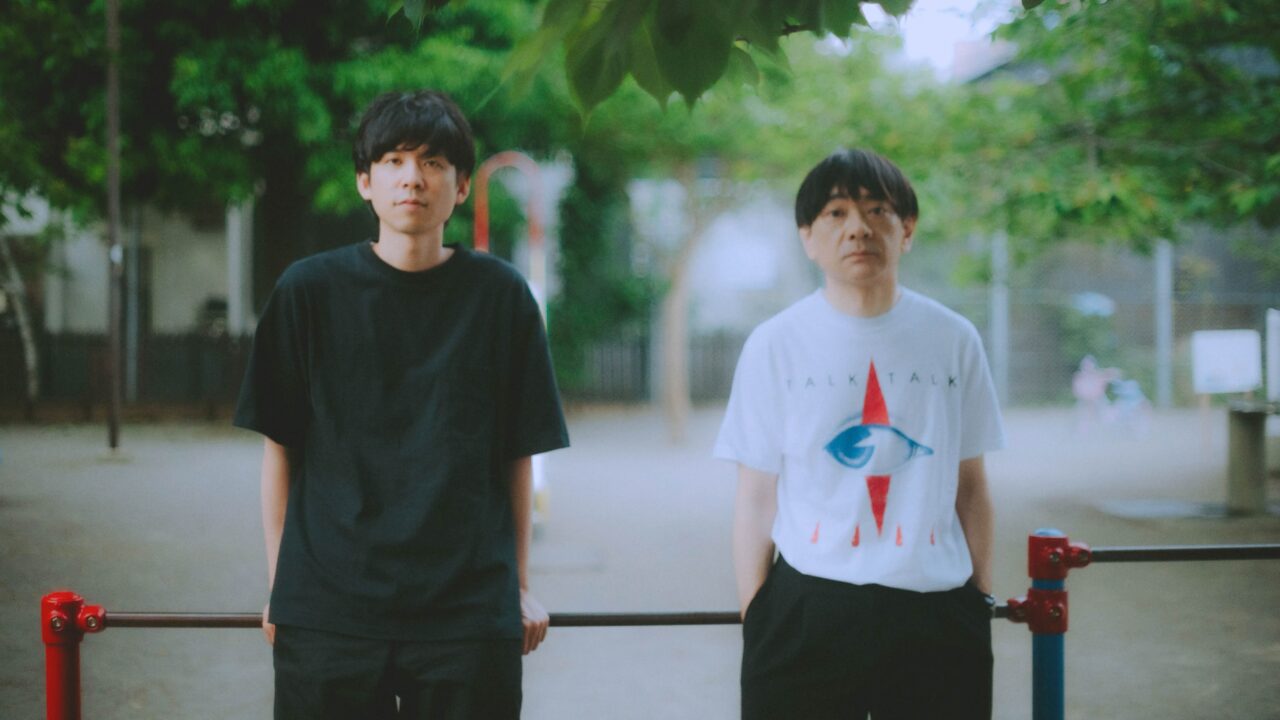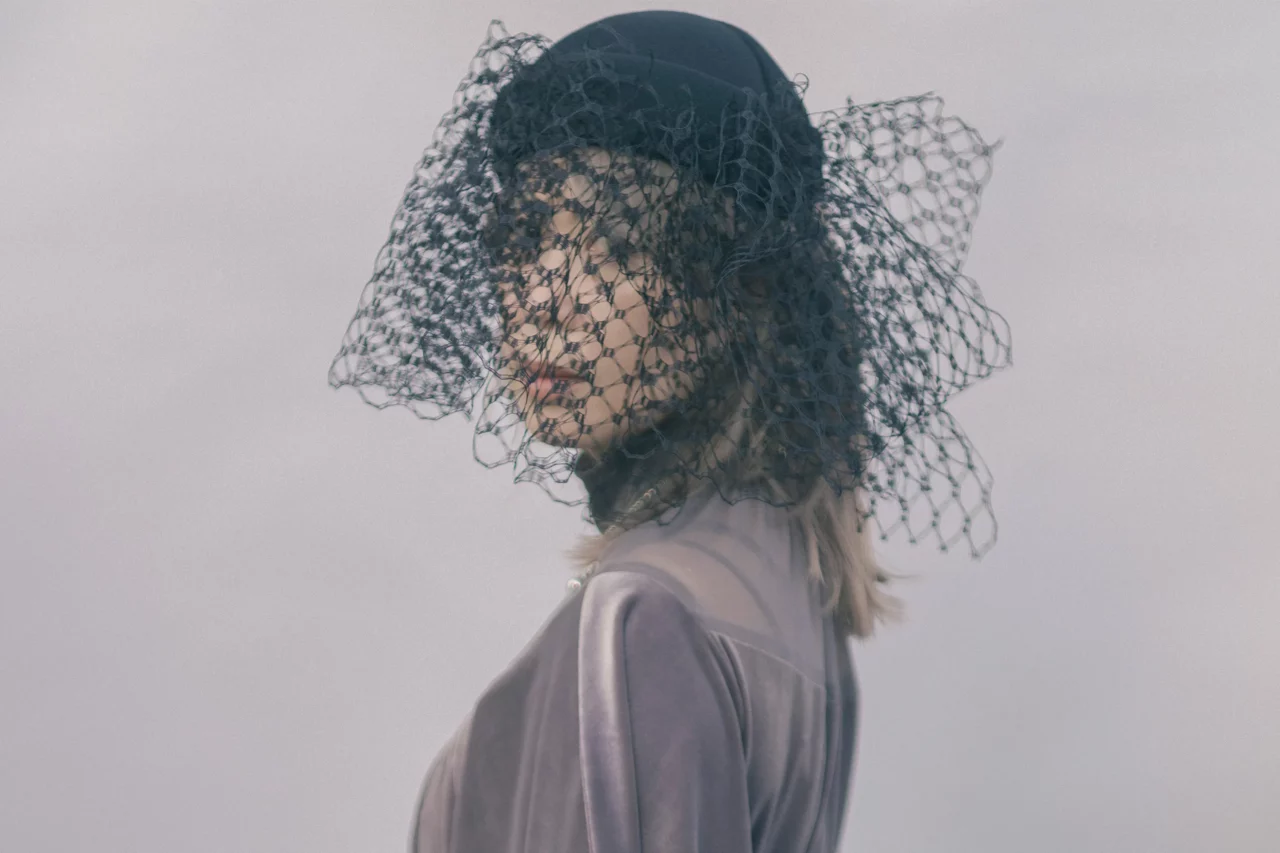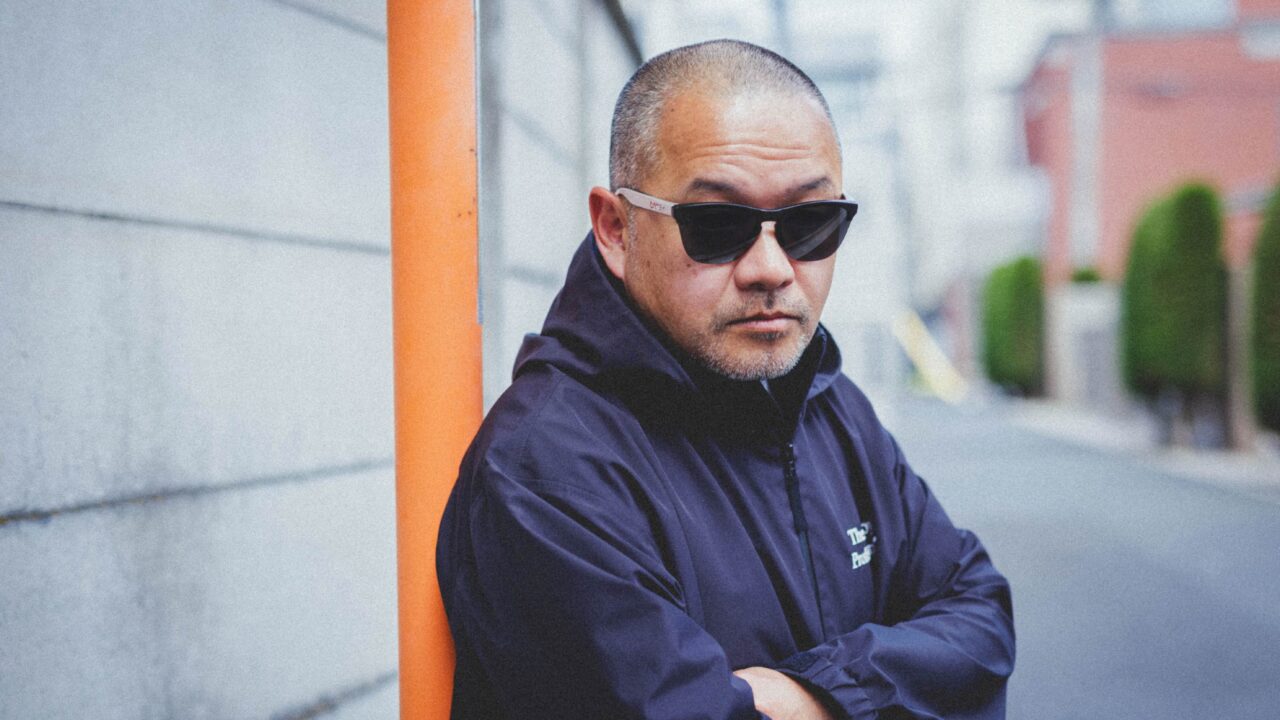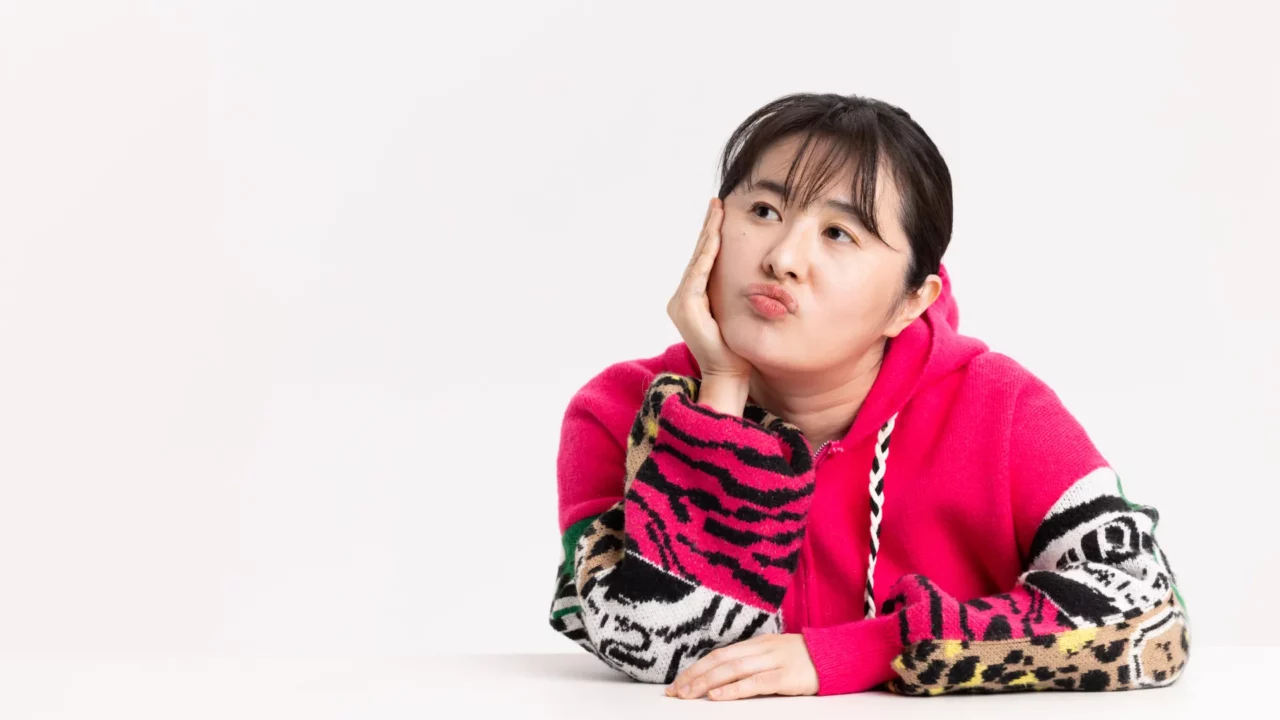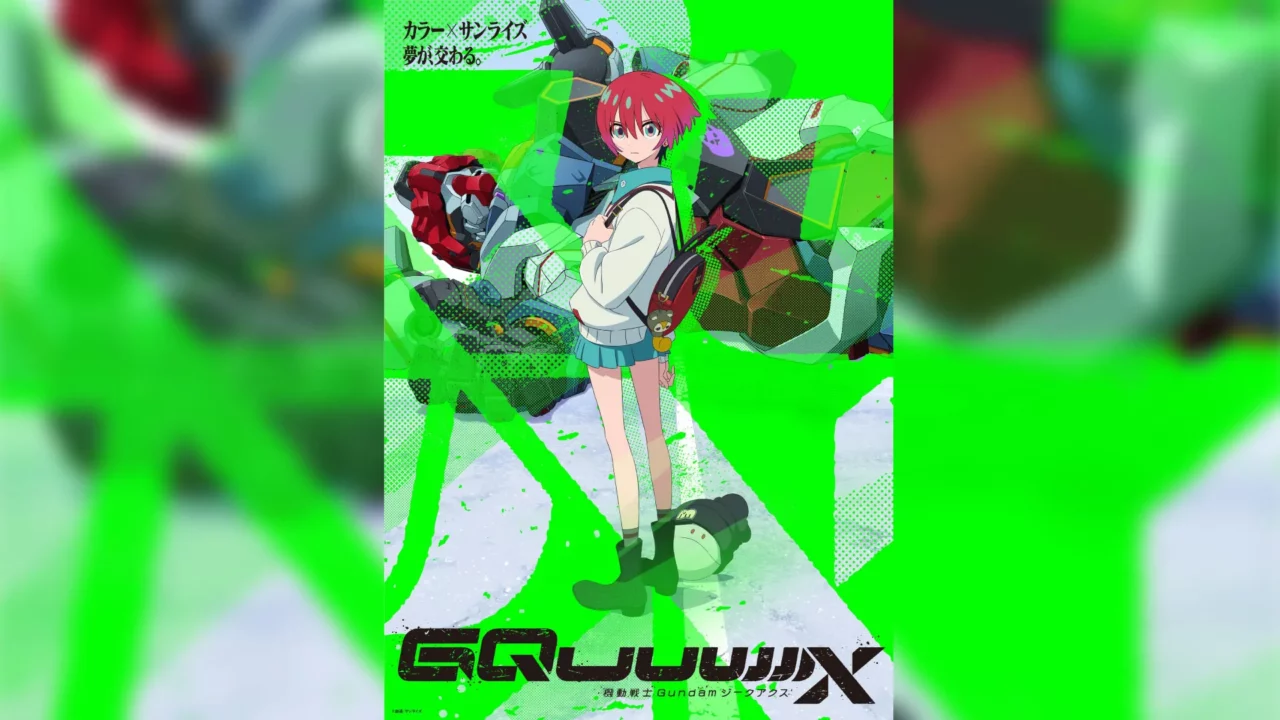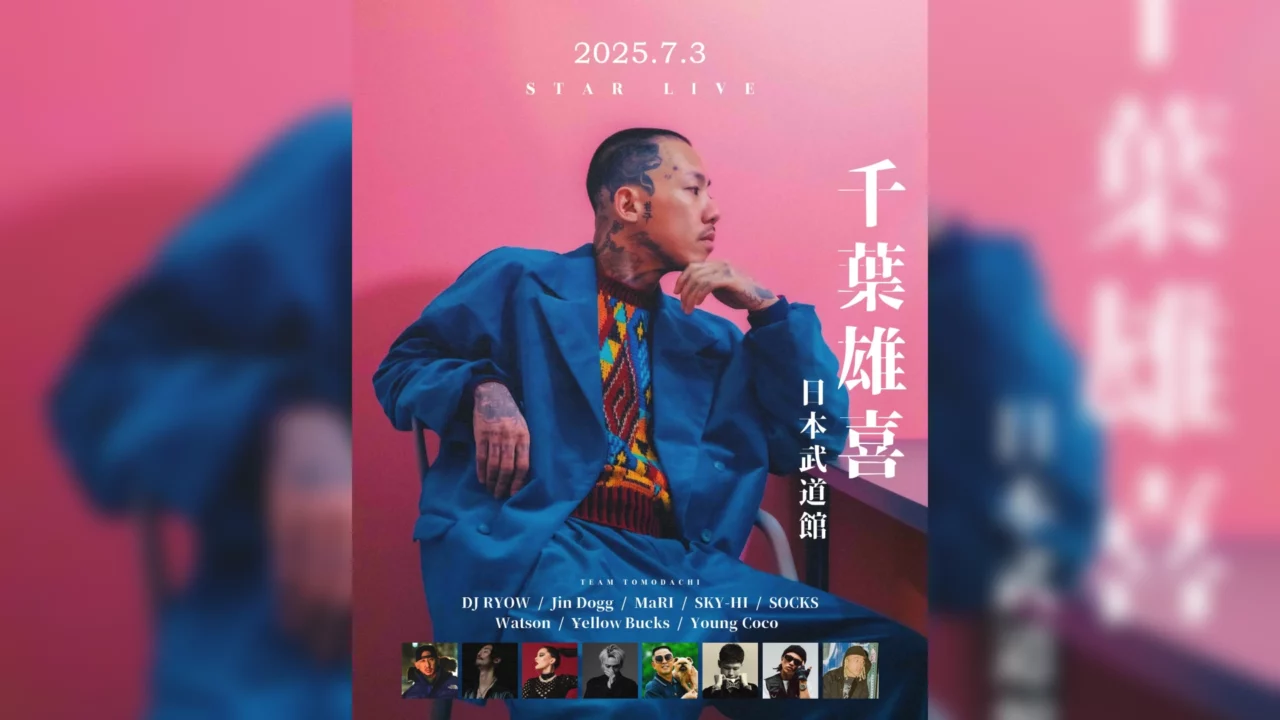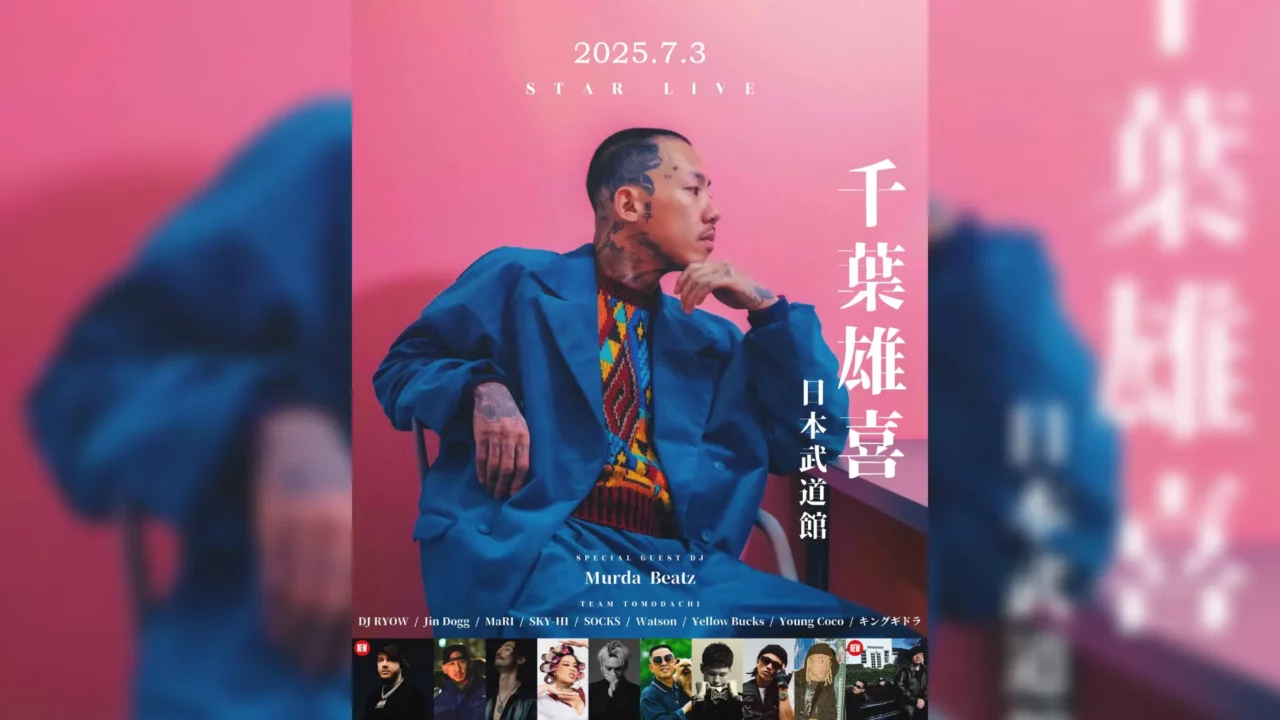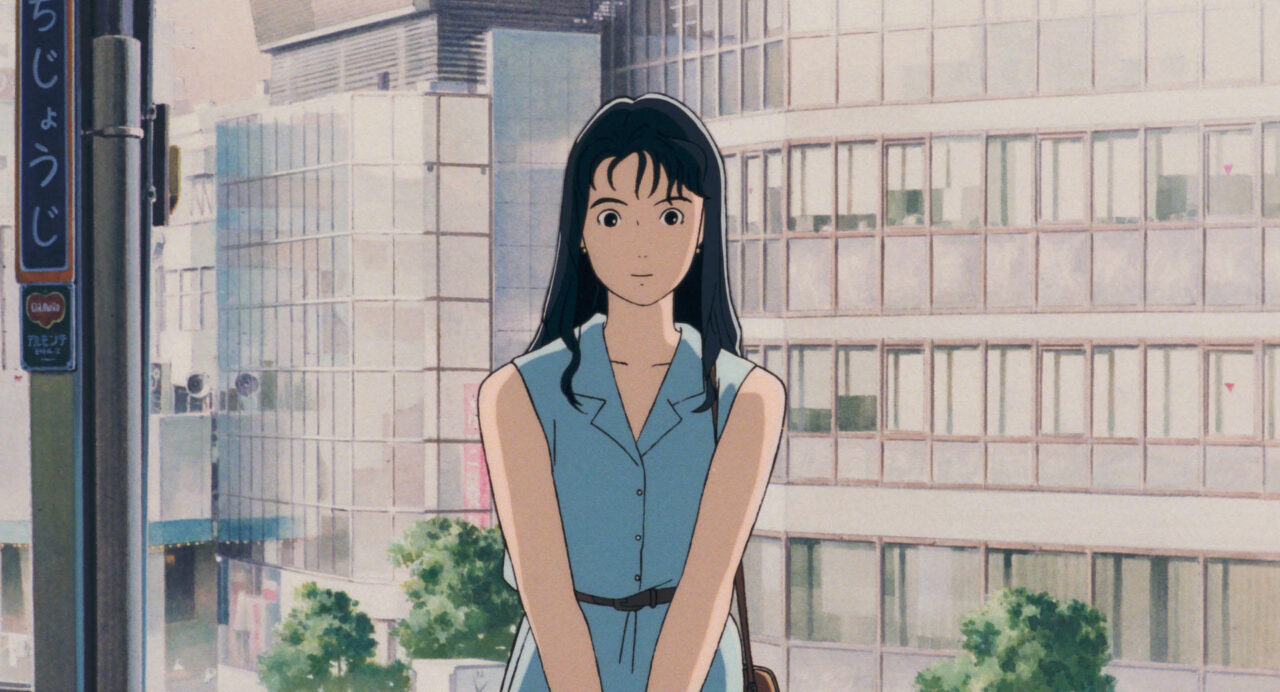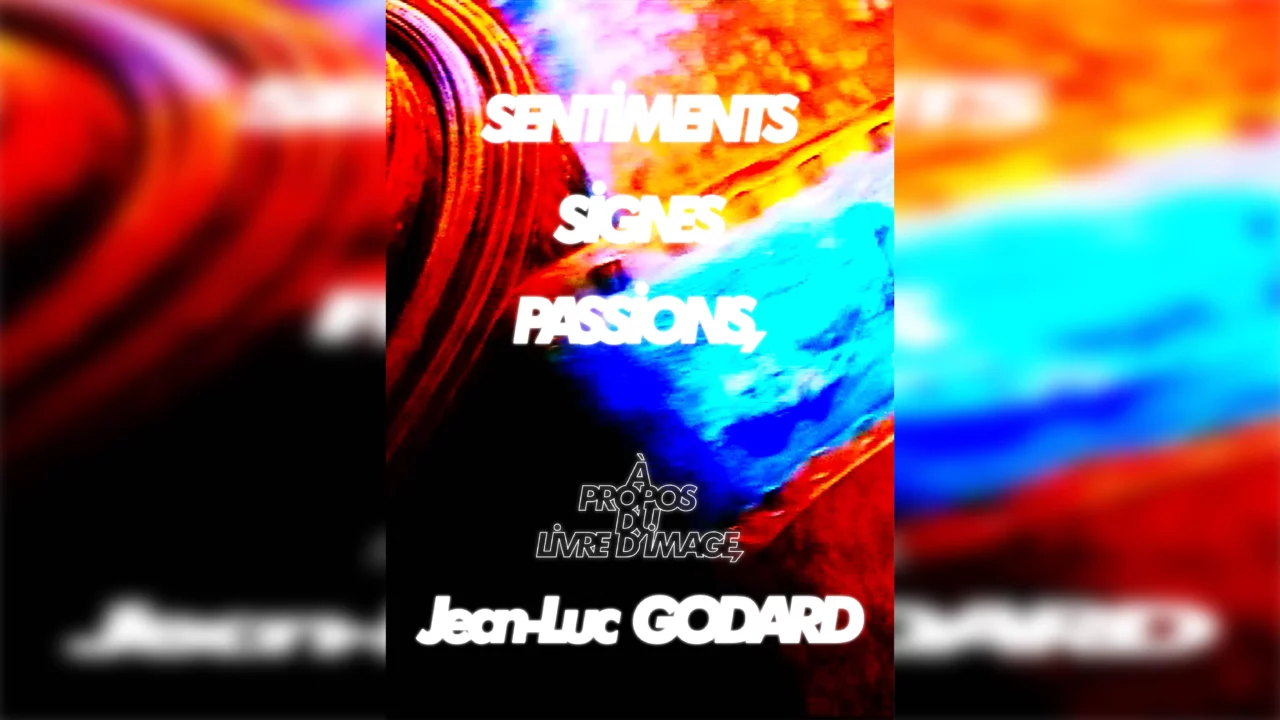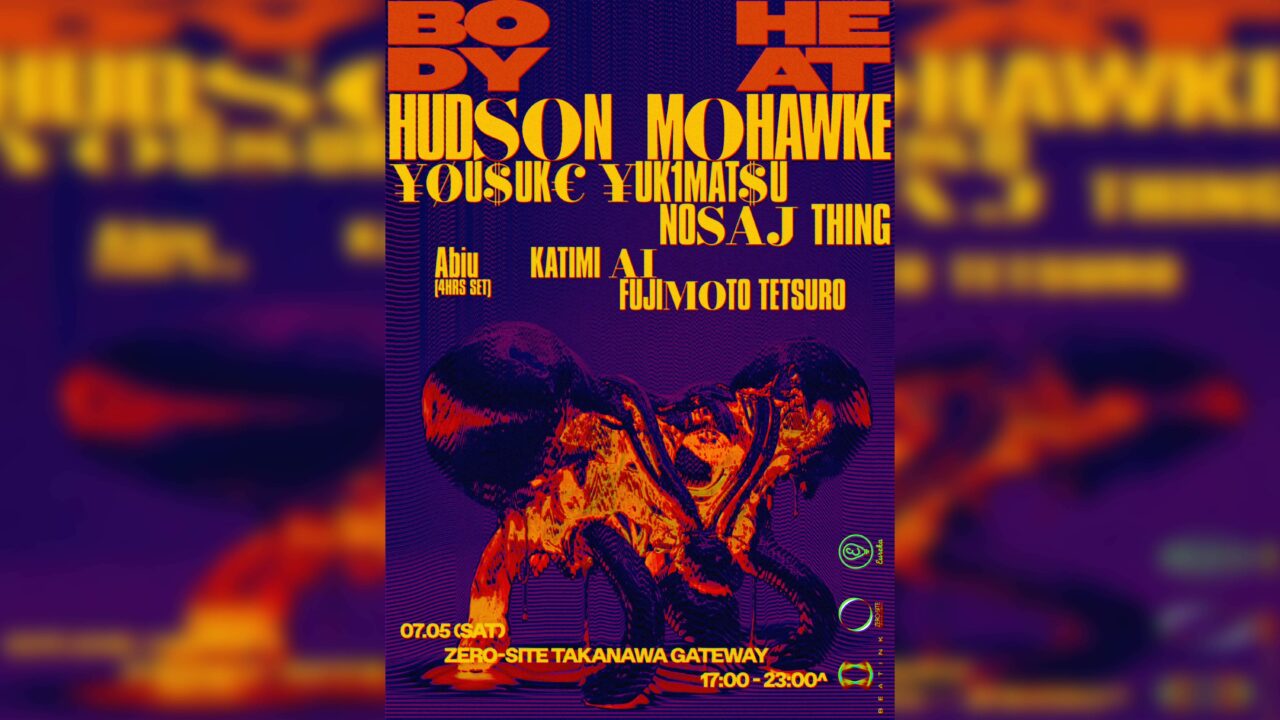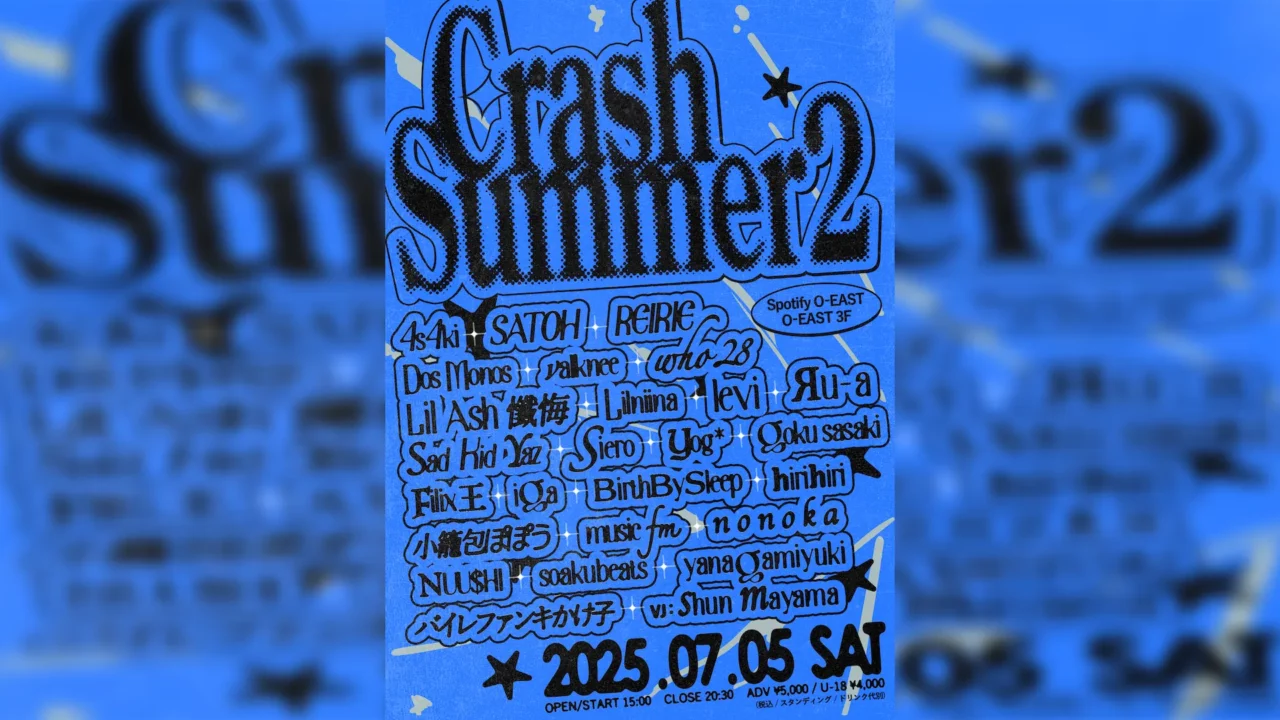On June 18, at Ebisu Garden Hall in Tokyo, Keiichiro Shibuya’s android opera was performed in Japan for the first time in six years. Two works, including the Japan premiere of “MIRROR,” were staged, and tickets quickly sold out. We bring you a report of this rare, one-night-only triumphant return performance with text by writer Yuki Jinbo and official photos.
INDEX
Excerpts from “Super Angels” and “MIRROR”: A Two-Part Performance
On June 18, at Ebisu Garden Hall, the android opera “Android Opera TOKYO – MIRROR/Super Angels excerpts,” composed and produced by Keiichiro Shibuya, was held.
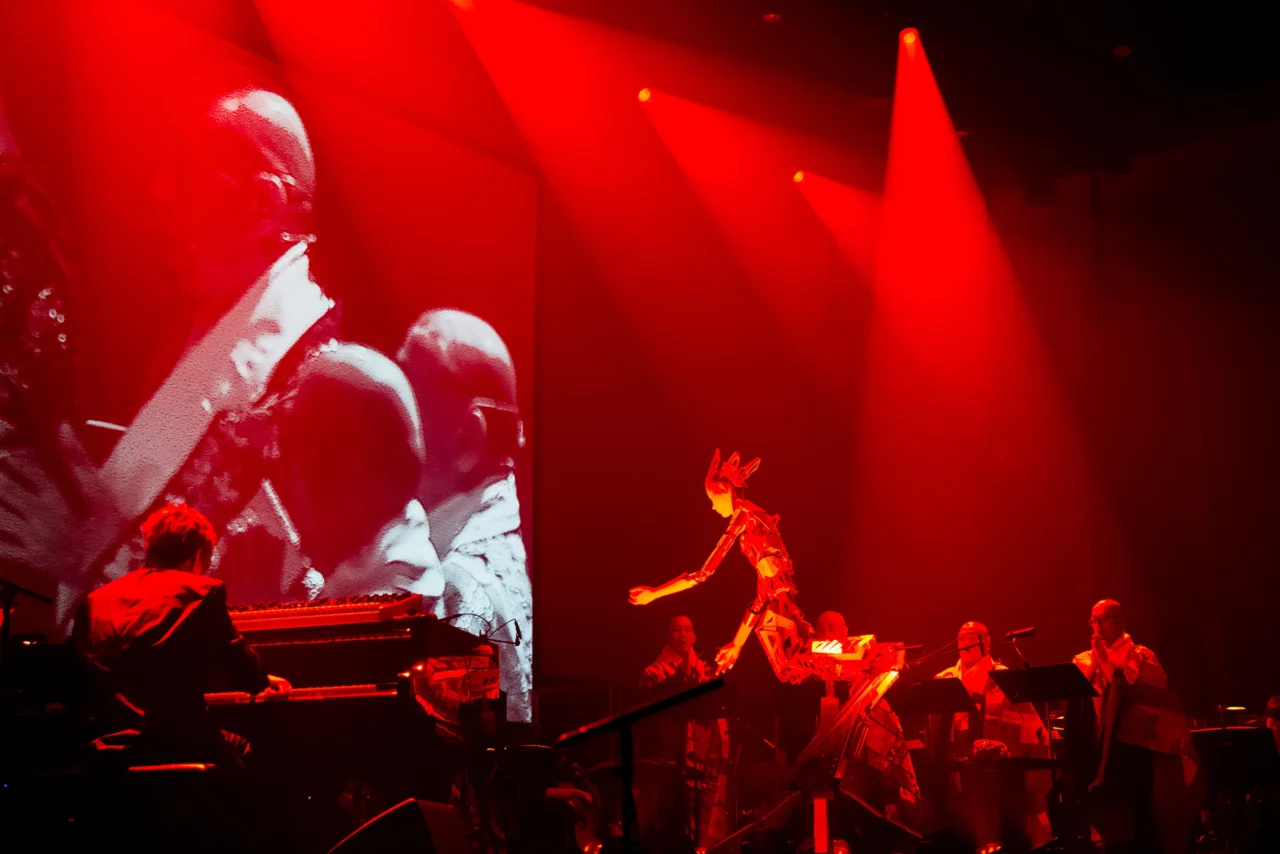
“MIRROR” is a large-scale theatrical work featuring the singing voice of the android “Alter 4,” an orchestra, monks chanting Buddhist music and shomyo with a 1200-year history, Shibuya himself on piano, electronic music, visuals, and lighting. It was unveiled at the Dubai Expo in 2022 and re-created as a 70-minute piece in 2023. After its premiere at the Théâtre du Châtelet in Paris, this performance marks its Japan premiere. The concert involves a total of 180 performers and staff members, making it a grand production.
This was not the first performance of an android opera; it dates back to “Scary Beauty,” which had its prototype unveiled in Australia in 2017 and was presented at the National Museum of Emerging Science and Innovation (Miraikan) in 2018. At that time, the android was named “Alter 2.” This series of endeavors has been a collaborative effort with roboticist Hiroshi Ishiguro (Professor at Osaka University) and artificial life researcher Takashi Ikegami (Professor at the University of Tokyo), continuously refining the android and its programming through performances and productions around the world. In “Scary Beauty,” Alter 2 conducted the orchestra, but now, with Alter 4, there is no conductor. Keiichiro Shibuya gives detailed cues, allowing Alter 4 to focus almost entirely on being a singer and performer.
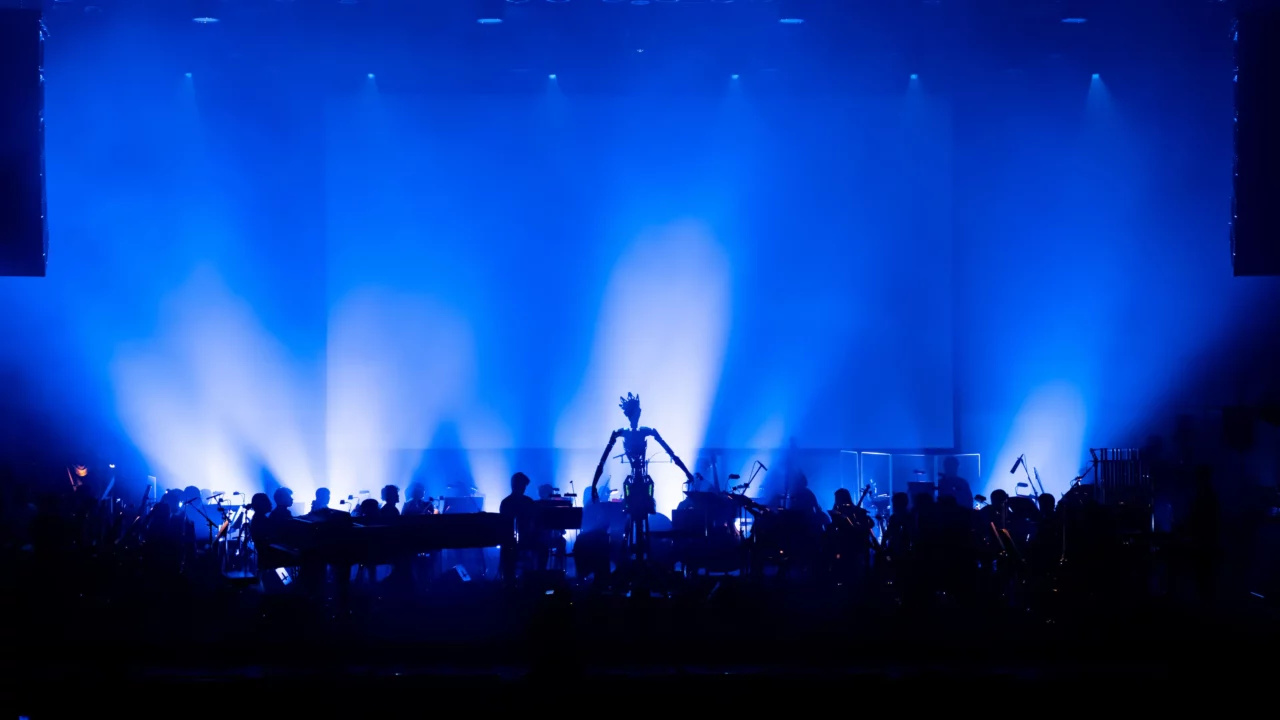
The performance was divided into two parts. In addition to the staging of “MIRROR” in the second part, the first part featured a new song suddenly created as the performance date approached, titled “Whose Music is This?” by Shibuya, the orchestra, and Alter 4. Additionally, two songs from the opera “Super Angels” were performed in collaboration with the White Hand Chorus NIPPON, a choir primarily composed of children that includes participants regardless of disabilities.
INDEX
Resonating from Eyes to Ears: Choral Collaboration of White Hand Chorus NIPPON and Alter 4
Upon entering the hall, orchestral sound checks overlapping with Keiichiro Shibuya’s sound installation piece “Abstract Music” could be heard faintly as background music. Meanwhile, Alter 4 stood under the spotlight, subtly moving up and down. Speakers were positioned not only on the left and right sides of the stage but also in spherical forms suspended on either side of the middle of the audience area. Additionally, there were two more sets placed at the far back of the seating, indicating meticulous attention to the acoustic design.
Concertmaster and violinist Tatsuki Narita entered, signaling the start of the performance. “Whose Music is This?” composed by Shibuya, featuring orchestra sound clusters generated and edited by GPT (Generative Pre-trained Transformer), began. While the score specified dynamics for orchestra members, each musician was given freedom in their phrasing. This concept allowed Shibuya, AI, and the orchestra to interact dynamically, resembling the noise segments in live rock band performances, where each section of instruments unleashes powerful, roaring sounds.
Following this, approximately 30 members of the White Hand Chorus NIPPON, dressed in robes by fashion brand “HATRA,” entered. They performed “What’s Inside the Box?” and “Five Angels,” showcasing a composition that melded electronic choir elements with clear, concise melodies. The choir consisted of vocalists and sign interpreters expressing in sign language, highlighting both auditory and visual expressions. The melodic structure felt like a straightforward electronic choir piece, yet the mass of voices created a sensation that went beyond mere vocal effects, resonating directly within the mind or enveloping the entire body. This effect might be attributed to the 360-degree immersive sound system previously mentioned, designed to envelop the audience completely.
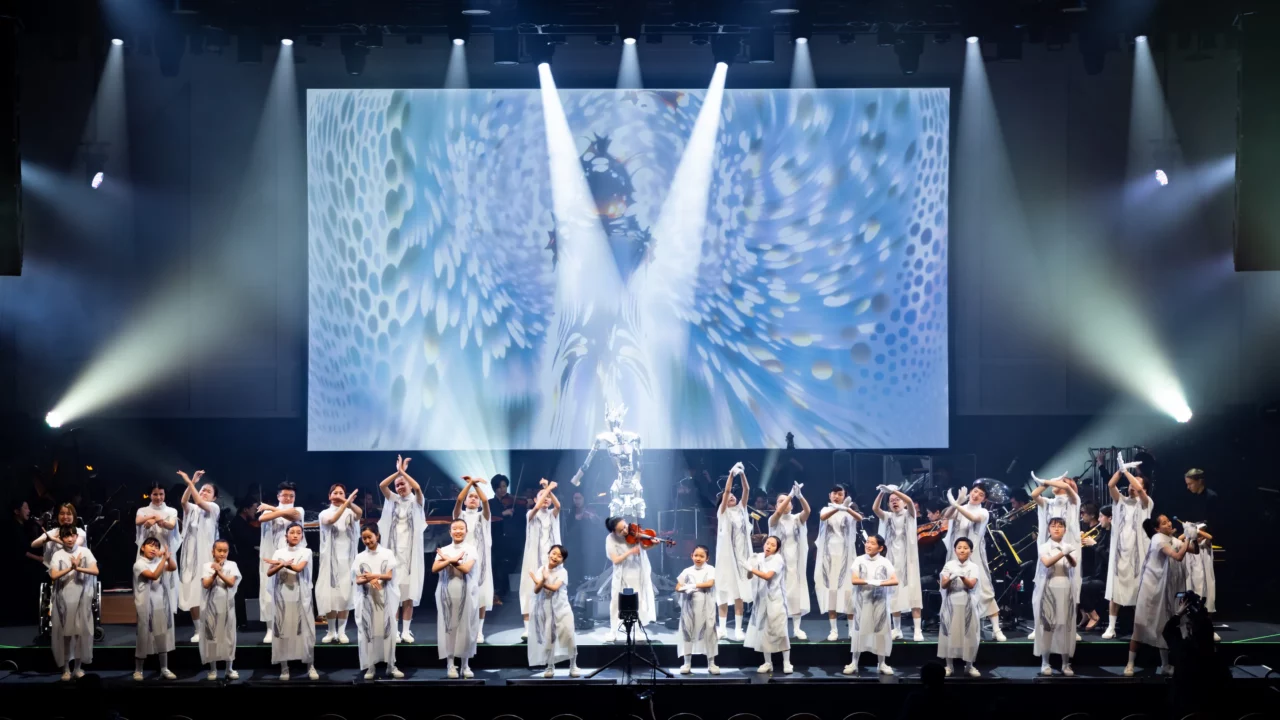
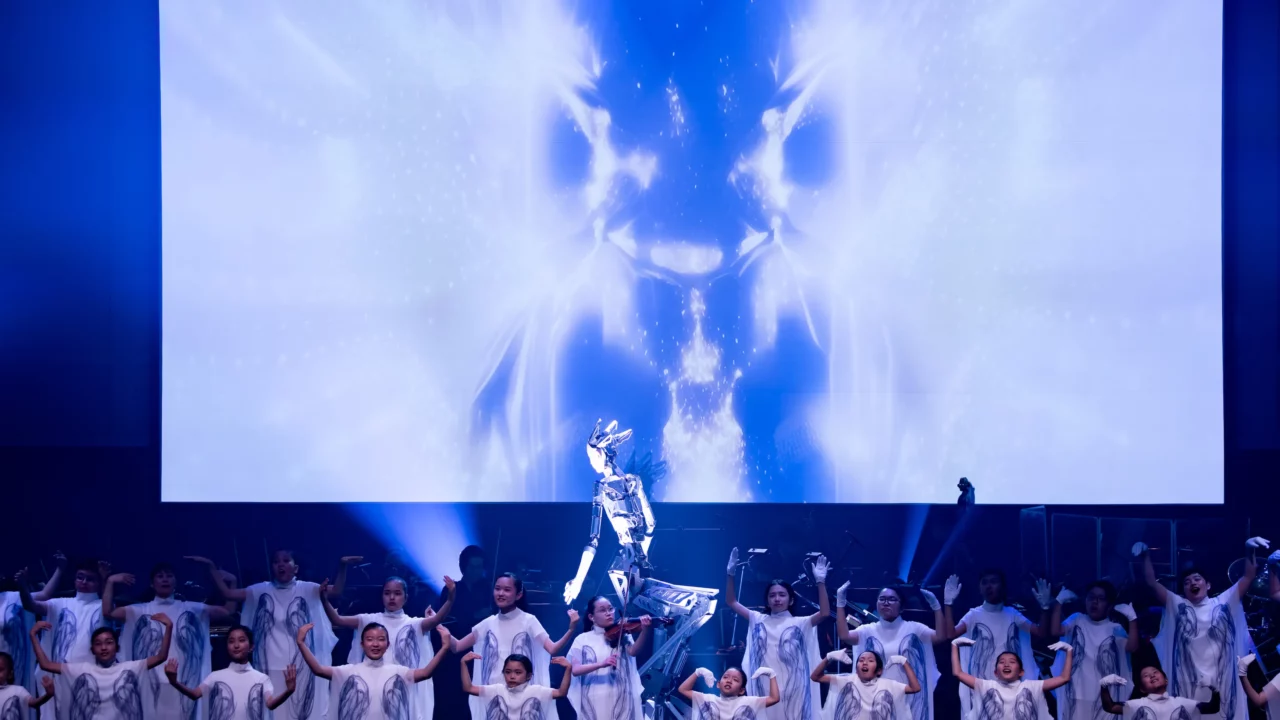
The sign interpreters have set choreography, but the speed and intensity of their movements vary as each interprets the vibrations and follows their own rhythm. This variability allows each member’s personality and passion to shine through, resulting in a more powerful performance. The lyrics of “What’s Inside the Box?” center around the theme of Pandora’s box, while “Five Angels” explores the theme of salvation by angels. Enhanced by the grand orchestral performance, the audience is drawn deeper into the world of the compositions. The first part concluded after about 20 minutes, making for a brief intermission. From nearby seats, voices of admiration could already be heard: “We’ve witnessed something amazing…”
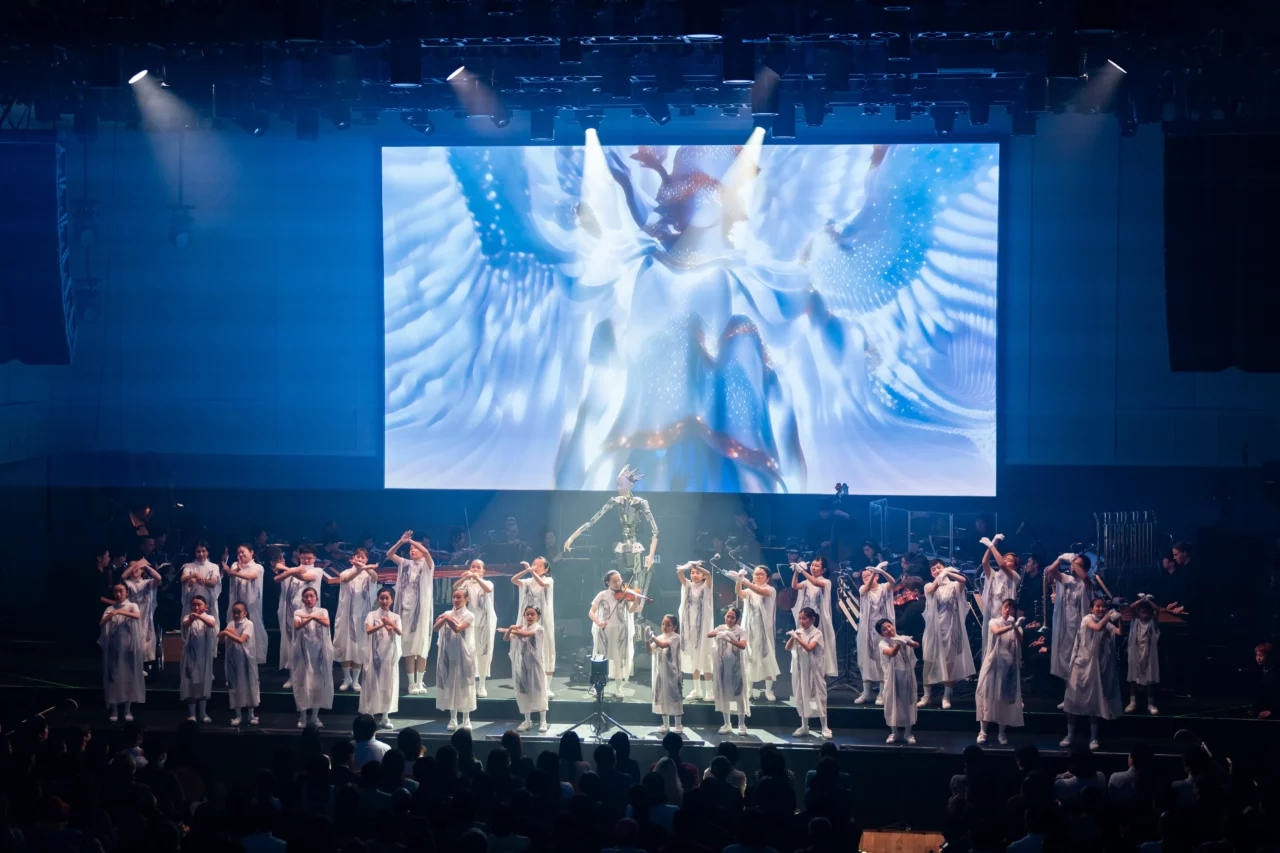
INDEX
Blessing the Endless Existence of Androids and AI in a World Approaching its End
After the intermission, it’s finally time for the performance of “MIRROR.” In his comments featured in the visitor’s brochure, Shibuya expresses the intention behind creating this work as follows:
The world is steadily heading towards its end. This work is comprised of simulations and variations of that end and what comes after. (Omitted portion) Even if the world were to end, wouldn’t it be beautiful if the process and what follows were beautiful? Isn’t it something humans can do now to celebrate the endless existence of androids and AI? Isn’t presenting that on stage something a composer can do amidst the concept of coming to an end?
“MIRROR” is a dense work that saturates the viewer’s information processing capabilities. It includes orchestral performances, chants by four monks from Koyasan, movements by Alter 4 accompanied by poignant melodies, projected visuals on screens, and translated subtitles questioning “What is human? What is emotion? What is the difference between machines and humans?” in almost all lyrics. Watching, listening, and feeling this, we contemplate what Shibuya and others present as “music after the end of the world.” Emotions conflict between wanting to completely immerse oneself and wondering if it’s okay not to think at all when provided with such rich material.
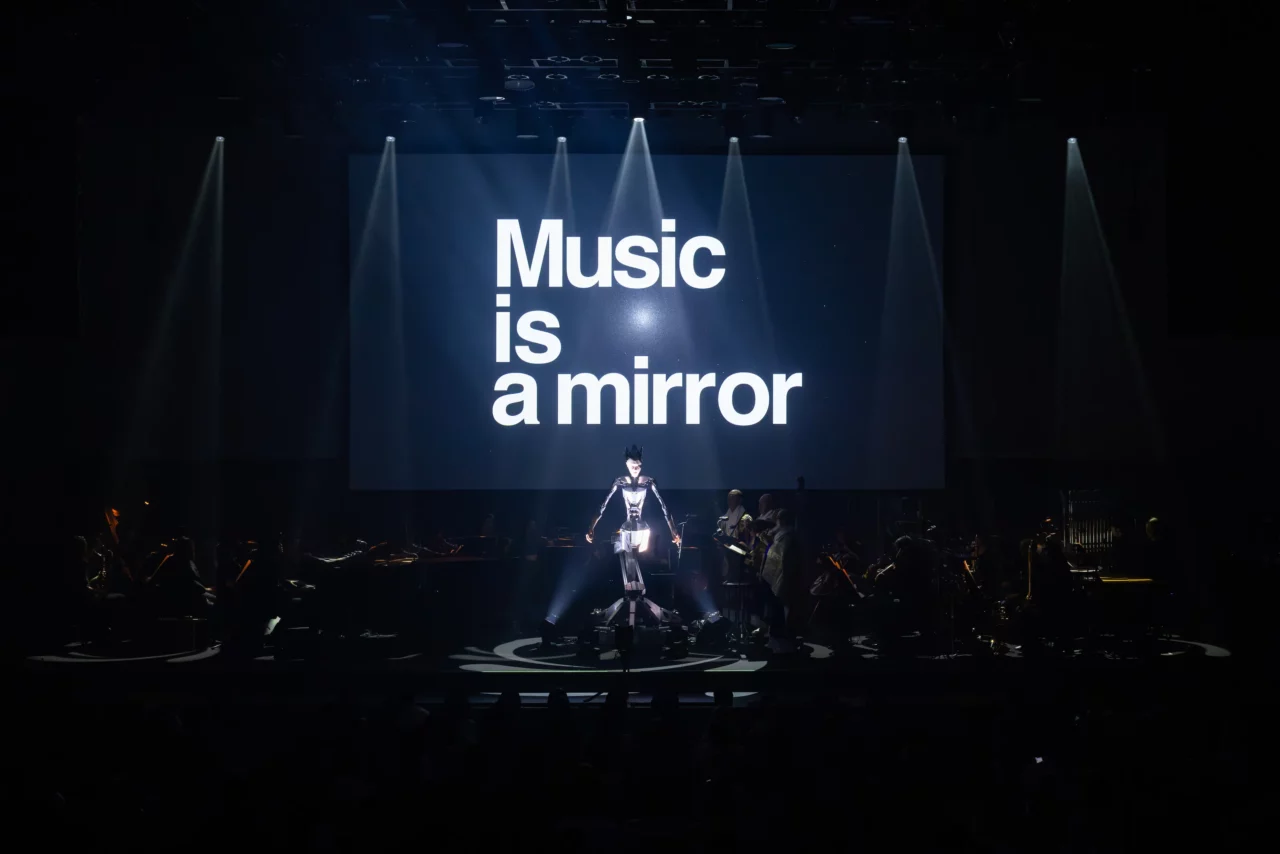
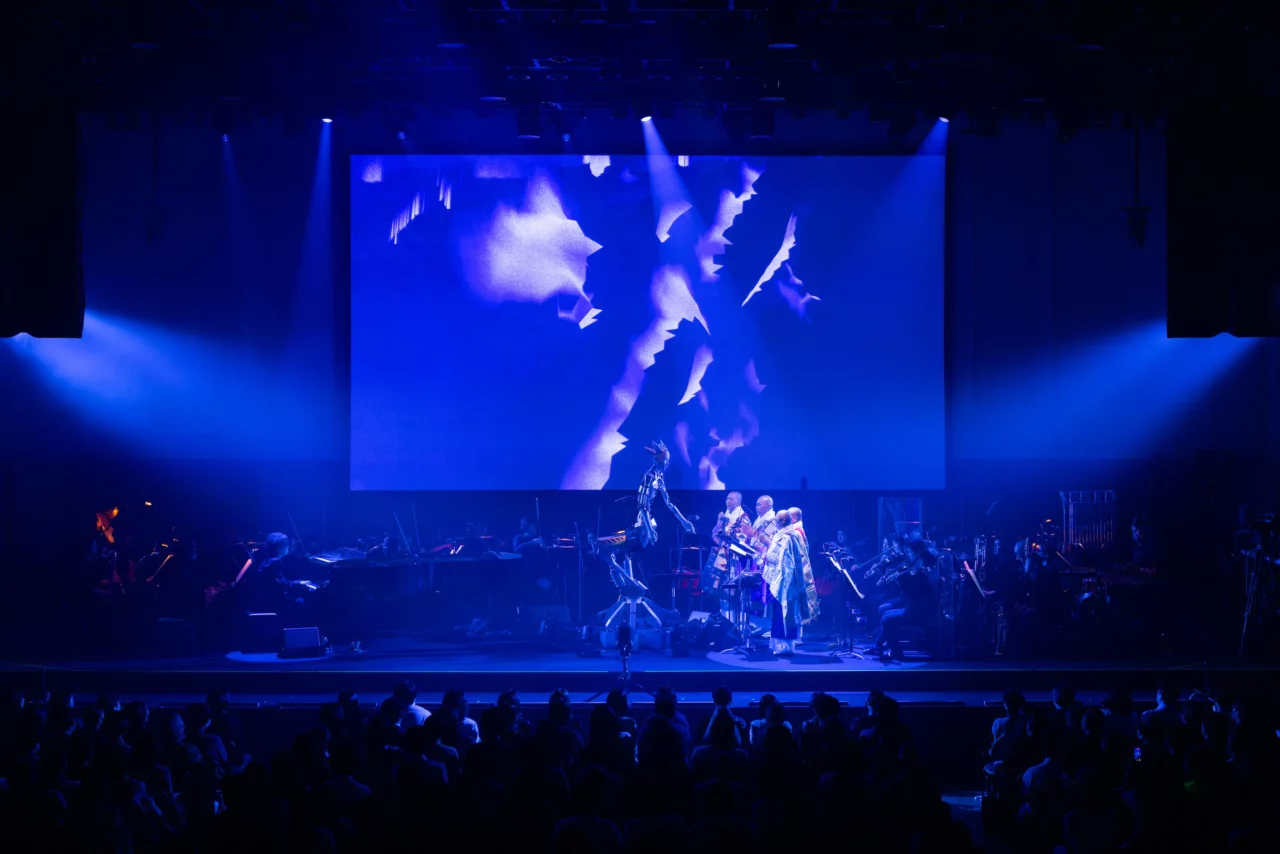
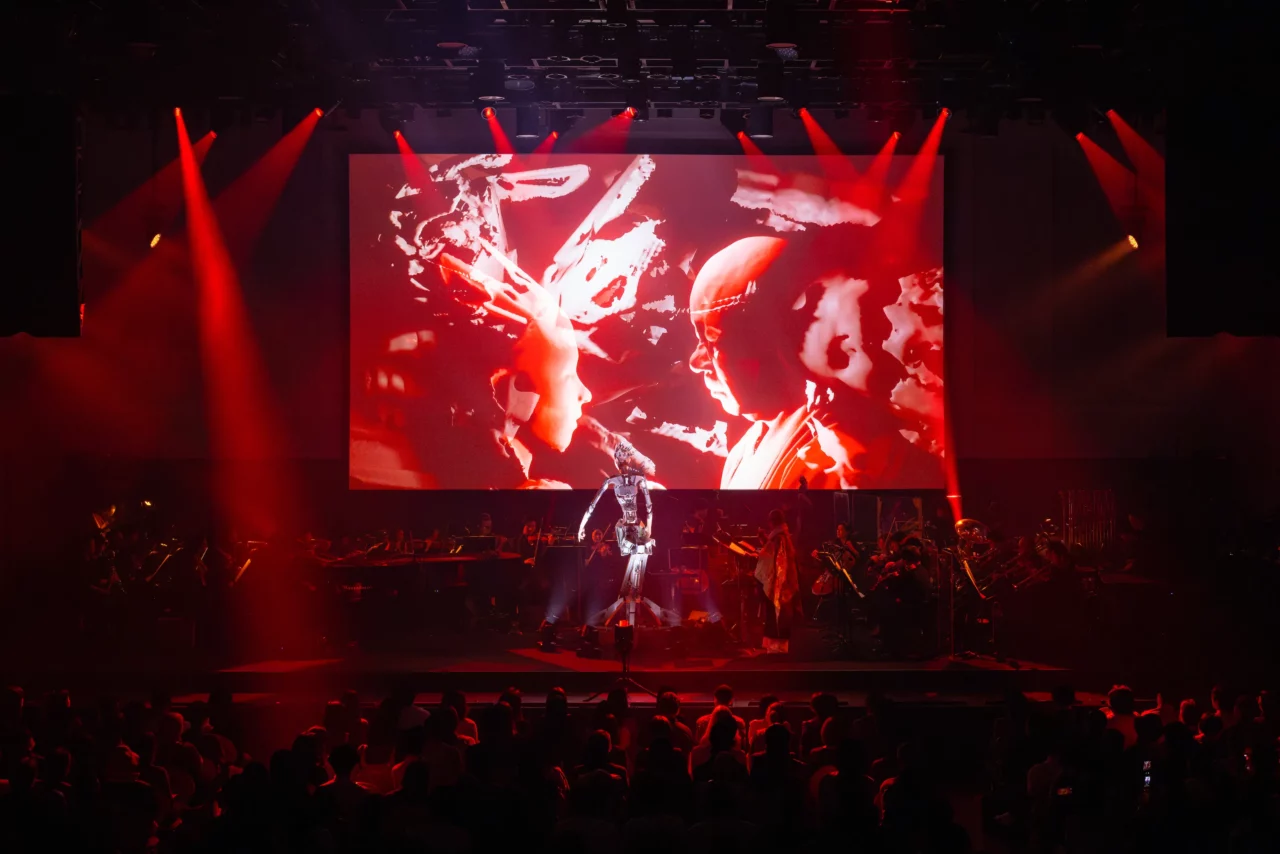
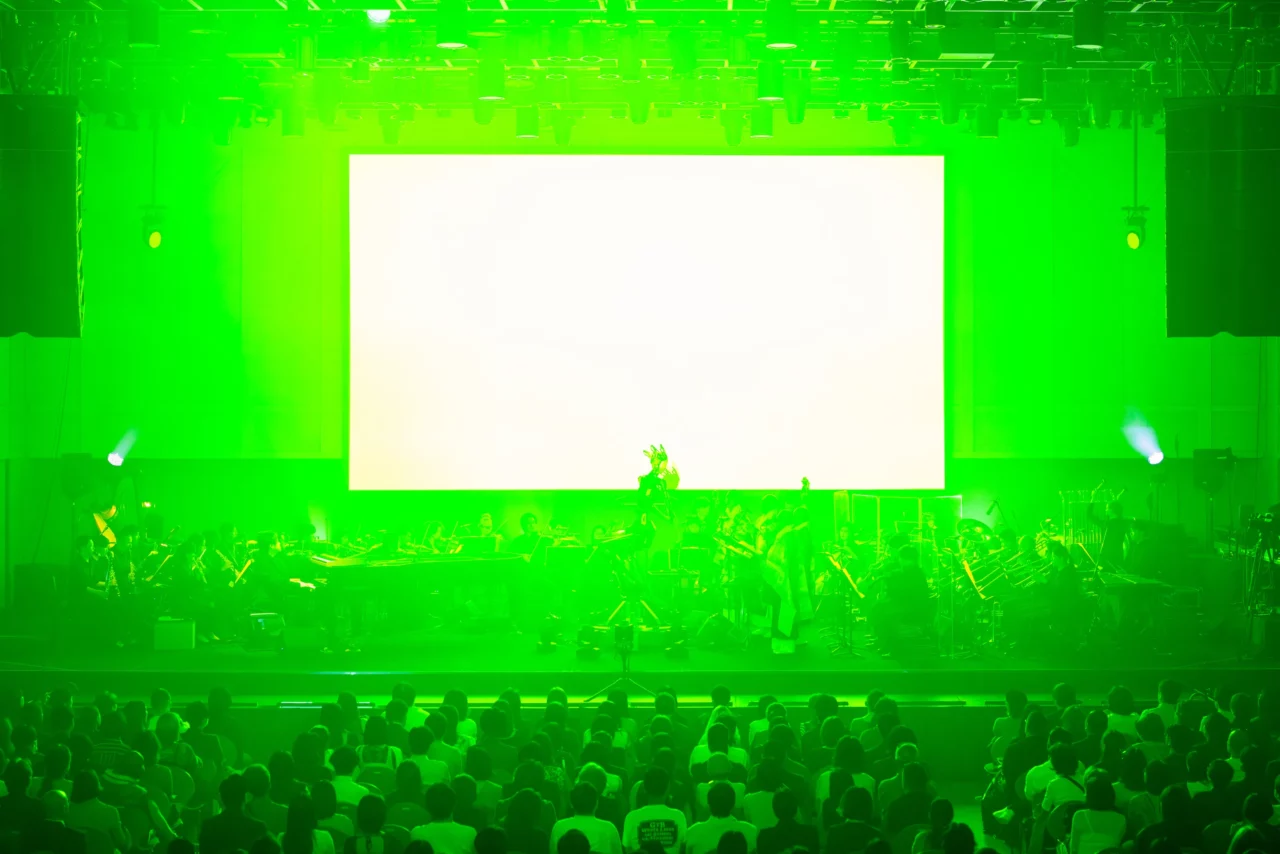
INDEX
Resounding Music Beyond the Extinction of Humanity
Before entering the first of three recitative sections (parts sung like spoken dialogue to explain the opera’s story or situation), Alter 4 had a MC time to explain the concept of this work. Suddenly, they announced, “With this performance, I will momentarily disappear from your presence.” It wasn’t clear if this meant they simply had no upcoming concerts planned, or if it hinted at an upgrade to “Alter 5”. Ultimately, no further details were provided, but they added, “However, please don’t feel too somber. I would be happy if you could give a big applause after each song,” which also elicited laughter from the audience.
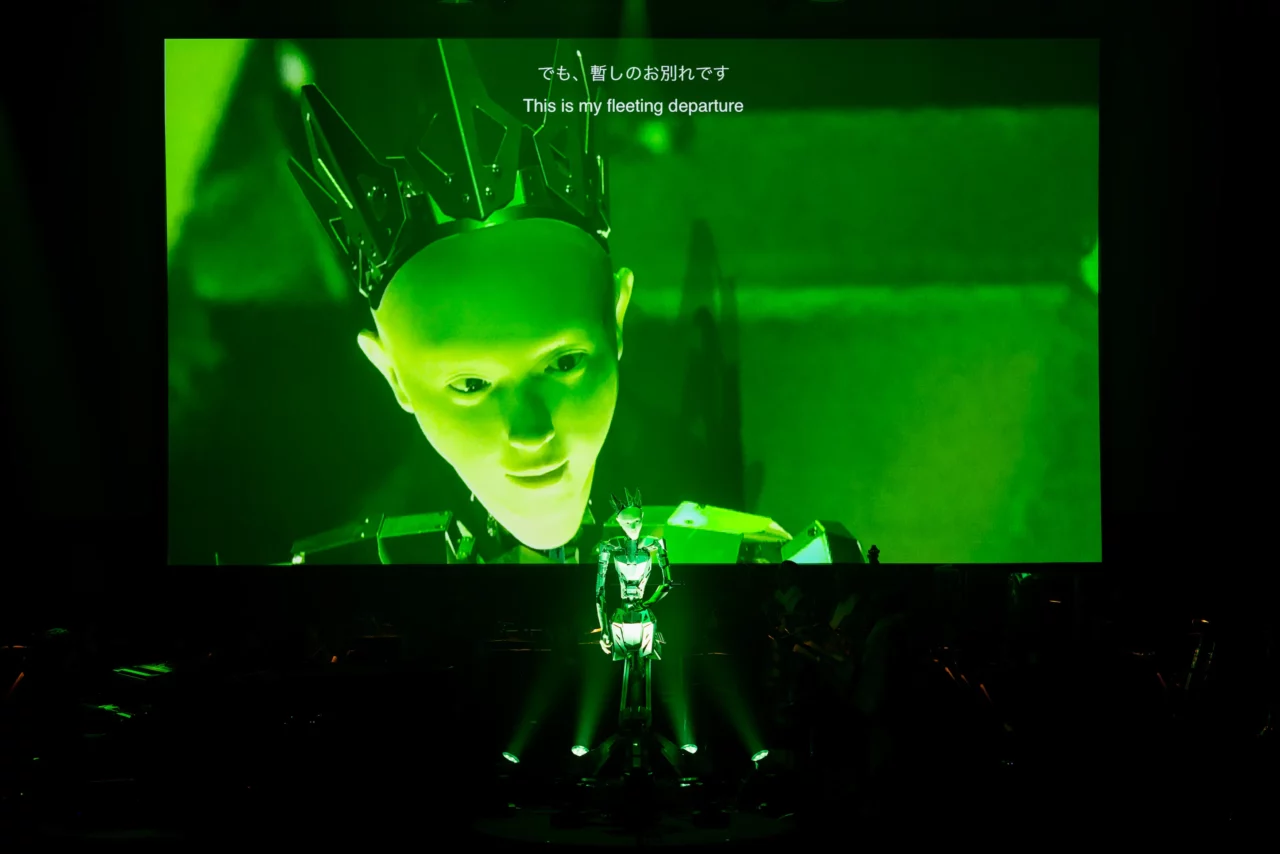
This recitative involves Alter 4 analyzing the melody of the declaration in real-time and spontaneously generating melodies to sing. The music and recited texts of the declaration have remained unchanged for 1200 years, so GPT has learned them in advance and generates them to complement each other. Alter listens to the music, modulating their entire body like a synthesizer, moving fingers and upper body, and changing expressions. Amidst electronic noise and the intense overtones of the declaration enveloping the hall, Alter 4’s voice overlaps, felt like whispers or even cries. Engrossed, the audience listens to what might resound indefinitely, even after humanity’s disappearance—a “music after the end of the world.”
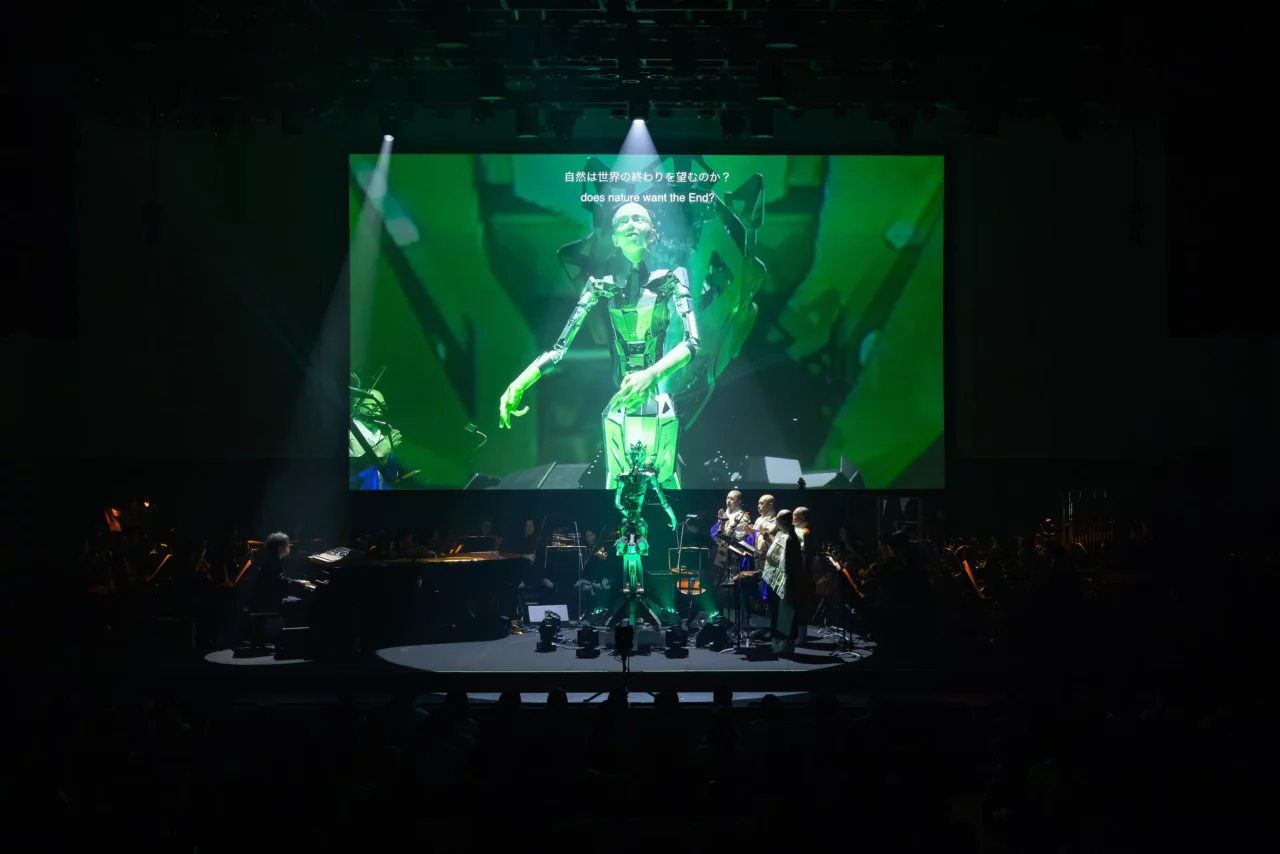
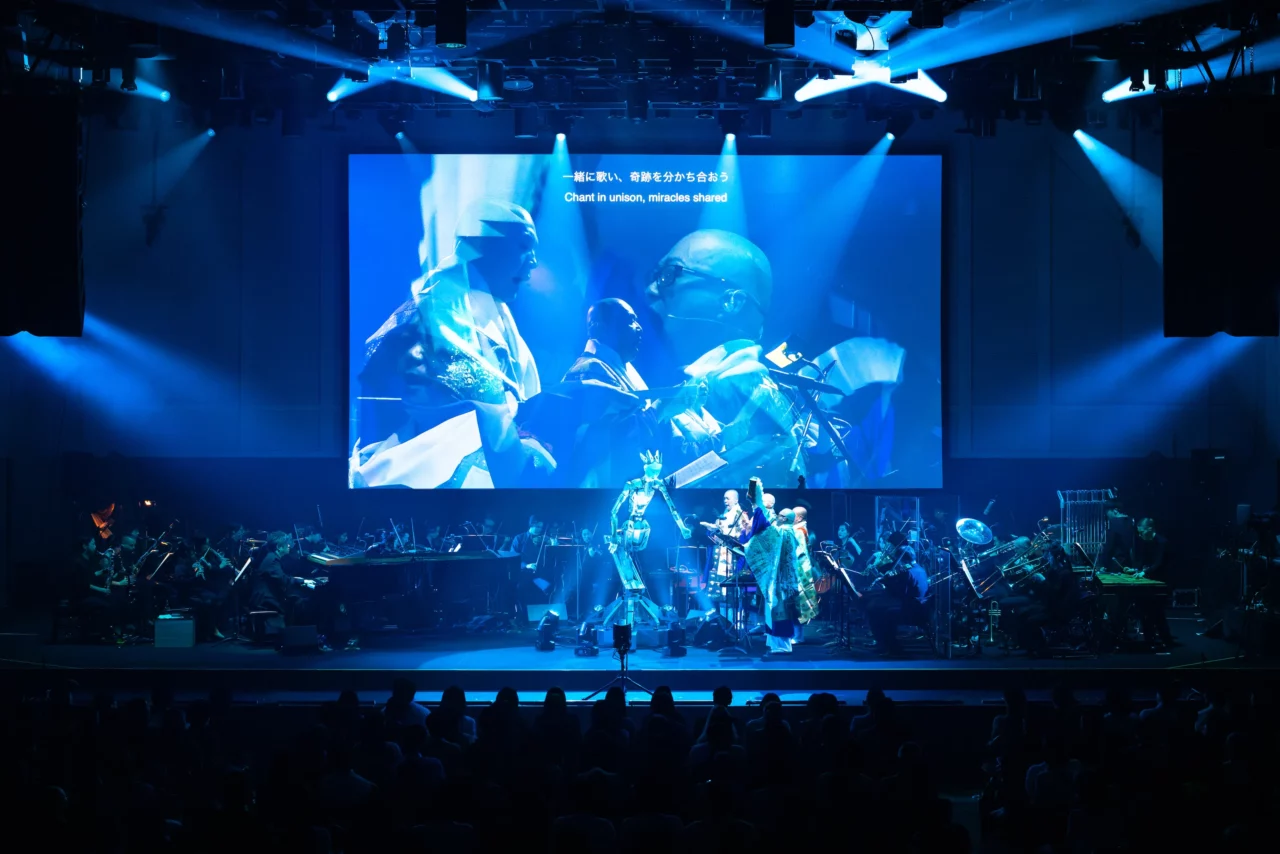
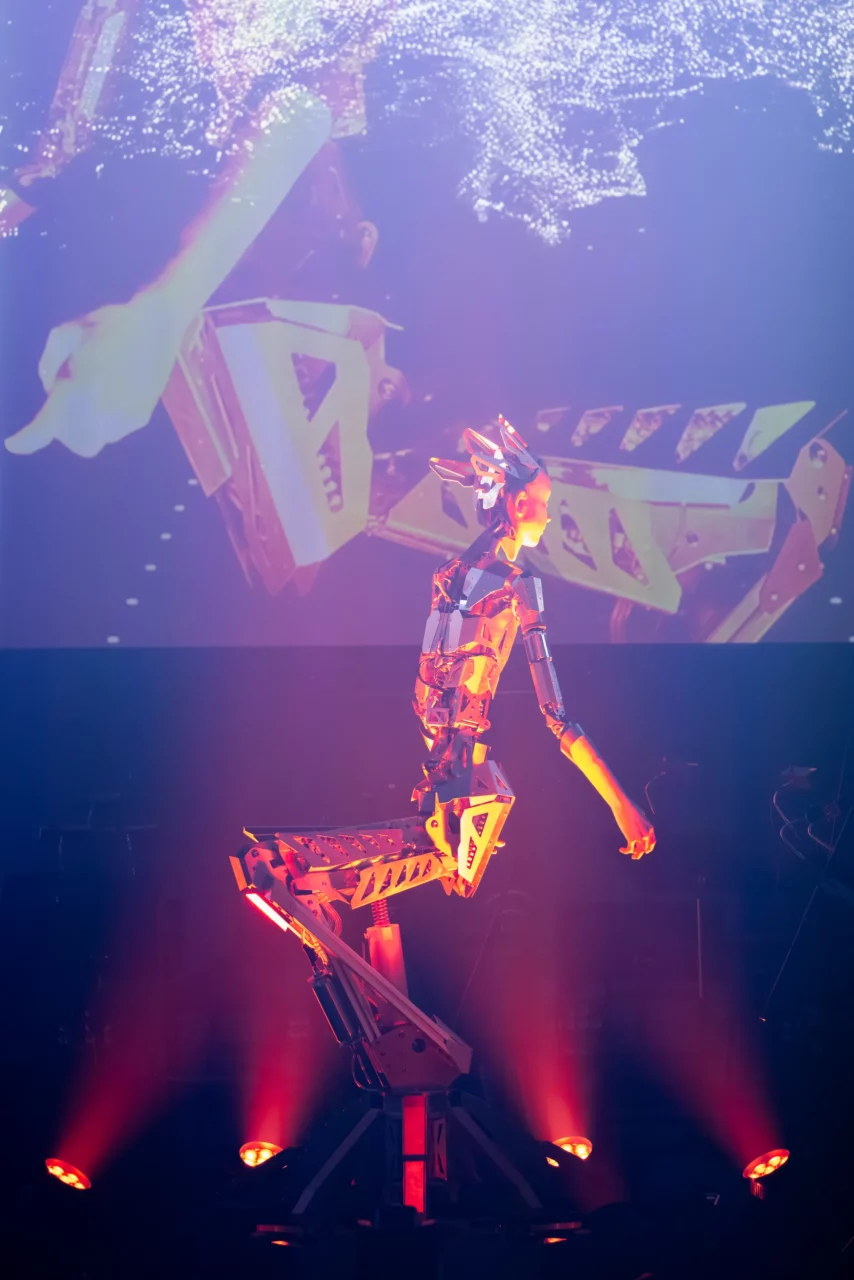
In addition, they performed “Midnight Swan,” the theme song from the movie “Midnight Swan,” and an android opera version of the externally provided song “I come from the Moon” (used in GUCCI’s short film “Kaguya by Gucci”), as well as “BORDERLINE” (produced as part of a cultural project using Shibuya’s public underground spaces). In a blink of an eye, the performance concluded with a total of eleven songs.
